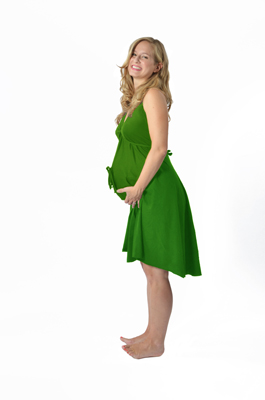Podcast: Play in new window | Download (Duration: 11:46 — 8.1MB) | Embed
Subscribe: Apple Podcasts | Spotify | iHeartRadio | Email | TuneIn | RSS | More
Mary Apple, CEO of Pretty Pushers, a company based in New York which manufactures and sells Labor Gowns for women during birth joins Enterprise Radio.
Listen to host Eric Dye & guest Mary Apple discuss the following:
- What exactly is a Labor Gown?
- What do the doctors and nurses say when women opt out of the hospital gown for one of those?
- What has been the hardest thing about Manufacturing in the USA?
- Did you have to raise capital to get this started and how did you do it?
- When hiring, do you find the person for the position, or the position for the person?
- What parting advice do you have for the entrepreneurs listening?
Duration: 11:46
Mary Apple was born on Maryland’s Eastern Shore and moved to New York at the age of 17 to attend art school in Brooklyn. Her studies in Fine Art led to weaving, which then led to a true interest in how craft could be a part of something more every-day…like fashion. Hardly every-day attire, Apple started a swimwear label named Barely Mary, for those who dared to wear crocheted mohair and blue sheepskin bikinis adorned with crystals.
When pregnant in 2006 at the age of 25, she knew she just couldn’t wear an awkward, uncomfortable hospital gown when it was time to give birth to her first child. She knew there had to be something better than that used faded checkered thing. She sewed the first Pretty Pusher Labor and Delivery Gown out of soft yellow cotton jersey fabric. She gave the dress a tie halter top and attached a long flexible skirt that covered the front and back of her hips even with her big pregnant belly.
As she was settling into her labor room, the nurses told her she had to remove the “pretty dress” she was wearing and change into a regular hospital gown. She insisted that this was her special labor gown and she was going to wear it. As she began her contractions, her doctors and nurses commented on how perfectly shaped her gown was for the needs of delivery. The anesthesiologist loved the halter top because he didn’t have to snake tubes through her sleeves. The nurses loved the color, feel and modesty of the dress.
When it was time to put in her epidural (more like, when she was screaming for the epidural!), she discovered she hadn’t made the back opening in the dress low enough. She asked the nurses to cut it to below her waist, but time was running out and they told her she would have to change into the hospital gown. She reluctantly did so…putting on the unisex frock that left her whole backside bare! She hated feeling so exposed.
She vowed to herself that she would design a garment that would preserve modesty AND make it easy for medical professionals to insert the spinal epidural. She just couldn’t leave a woman feeling as exposed as she as she had been.
When she got home, Mary sewed a new version of the gown she’d worn—this time with a lower back opening as well as a special window in the front of the skirt that could be untied so that electronic monitoring equipment could be placed on the belly without twisting the dress into exposing more intimate areas. This improved design is still the design Pretty Pushers uses today.
During the birth of her second child, Pretty Pushers was up and running and Apple wore the ‘I Dream of Sushi’ labor gown. She ended up in the same Delivery Room and had the same midwife who was present when she had to be changed out of her first gown, several years previous. This time, that same midwife, the nurses, and even the anesthesiologist praised the function of this improved gown.
Seven years since that first yellow dress, more than 30,000 new moms in the U.S. and 11 other countries have worn a Pretty Pushers Labor Gown for the most important day of their lives. Apple still lives in New York City with her husband and 2 children.
Related Web Site: www.prettypushers.com
[box_blue]Note: If you would like to listen to a podcast right away you can hear a sample by clicking on the “play” button on our podcasts page. If you would like to play your podcast later or take it on the road, you will first need to subscribe to and download the podcast using the subscription software on your computer, such as itunes. Then you will have to transfer the podcast file to your portable media device. We recommend the following subscription software for the best user experience:



